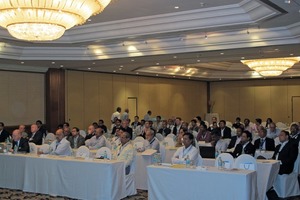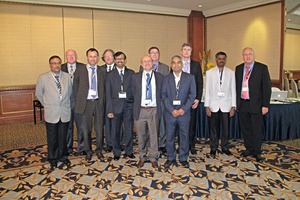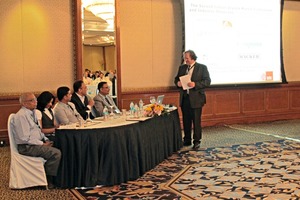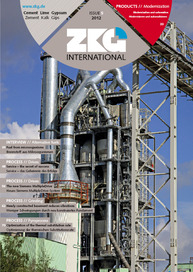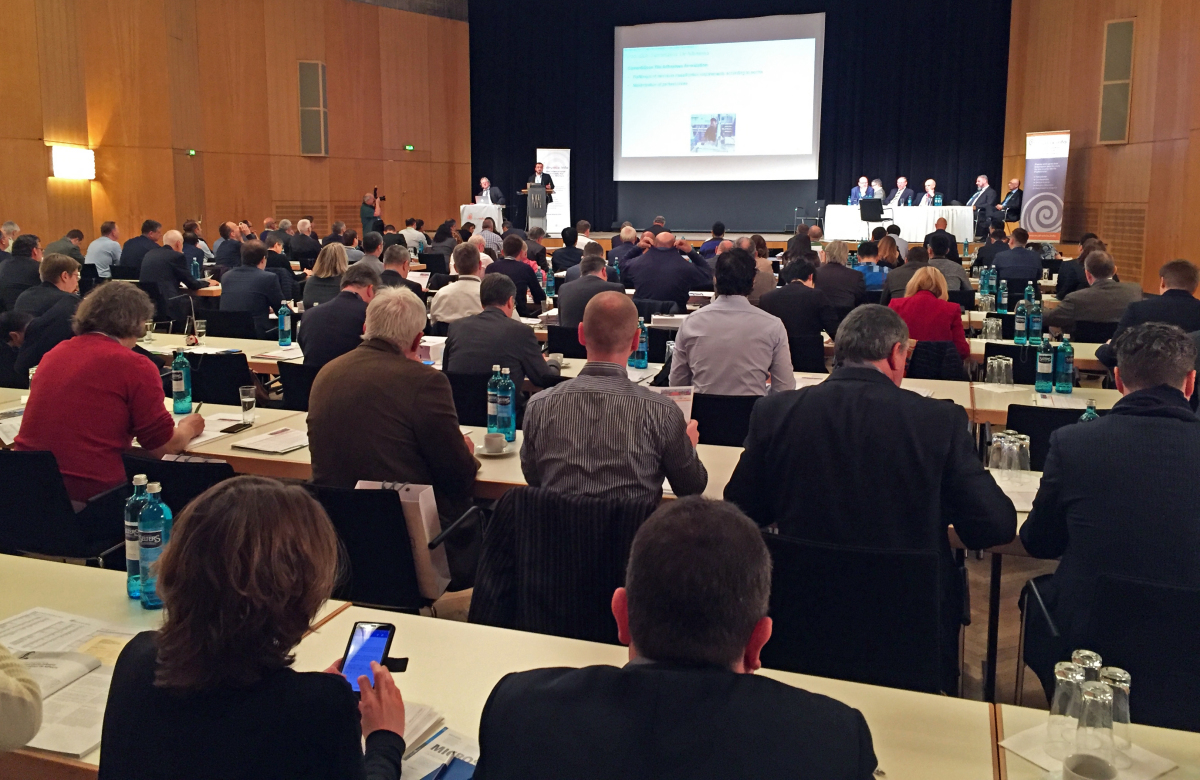Increasing demand for new construction materials
drymix.info, the International Community for Drymix Mortars, brought together the major interest groups in Mumbai already in November 2009 for the First Indian Drymix Mortar Conference to explore, expand and improve the market in India. After following up with a round table meeting in July 2011, which brought together mainly drymix mortar manufacturers for an open discussion about the challenges of the Indian market, recently the Second Indian Drymix Mortar Conference took place at the Leela Kempinski Hotel in Mumbai on March 15, 2012 once again uniting the entire industry (Fig. 1).
The conference program included special lectures (Fig. 2) on the performance of new additives and binders, optimizing drymix mortar formulations for conditions in the subcontinents, standard developments and market data, a moderated panel discussion (see info box) and an industry showcase.
Ferdinand Leopolder, president of drymix.info, welcomed about 100 delegates and opened the conference. Dr. Markus Möller (Rockwood Additives) started the lecture programme by discussing the use of an inorganic thickener in mineral-bound systems with practical examples for formulators and end–users. During his presentation he highlighted the fact that thickeners increase low shear viscosity for controlling sag and anti-bleeding, decrease high-shear viscosity for ease of workability such as troweling, pumpability, spray application and leveling.
The next speaker, Jean-Christophe Champier (Sofraden), talked about the role of automatic cleaning to decrease the time between formula changes and the prevention of cross contaminations in drymix mortar production facilities. The advantage of this system included producing many different products (sometimes more than 100 recipes) with one production line at high productivity and environmental benefits with as little waste as possible. The system works with compressed air and nozzles to lift the product, uses a connection to the de-dusting system to get the dust out of the mixer and operates alternately to lift and suck out the dust.
Lothar Hellenkamp (Conmix) closed the first session by discussing how the use of industrial renders and facades will increase the efficiency of a construction project and why this route could be a key competency needed with contractors for sustainable construction in India.
The delegates enjoyed a coffee break for networking and viewing the industry showcase that presented some of the participating organizations (Wacker, Frigmaires, Evonik, Sofraden, Doubrava, Rockwood and JK White Cement).
Saulat Khan (Wacker) was the first speaker in the second session. He talked about repair mortars modified with dispersible polymer powder and showed in his presentation how the modification improves the carbonation resistance of the concrete. In fact the addition of such materials improves many other properties as well, such as workability and wetting, adhesion to old concrete and steel, compressive strength and flexural strength.
Next, Dr. Arjunan Periaswami (MYK Laticrete India) gave an overview of the standards and specifications available for tile adhesives in India (BIS 15477). However, he pointed out that the Indian standard falls short of the current needs and growing trends in tile and stone installations. Through his presentation he reviewed standards and specifications used for tile adhesives across the world. He discussed proposals for developing a right approach for India exhorting mortar manufacturers and raw materials vendors to come together to upgrade the standard for Indian tile and stone installation industry.
Just before lunch Torsten Busch (Aqualon/Ashland) discussed how the performance of cement based dry mortar in a hot climate can be improved by the addition of specialty cellulose ether. He explained that the challenge with extreme climates such as high temperature, dry air, wind and porous substrates is the prevention of loss of water from mortars. He presented charts to show that new grades of cellulose ethers can improve the water retention even at 70°C. Consequently pot life and smoothening time are improved.
After lunch, Dr. Sumon Chakravarty (Ultratech) presented the potential of drymix technology in India with a particular focus on volume mortars. He advocated a joint effort of the Indian building material industry to introduce volume mortars such as masonry mortars and flooring screeds.
Dr. Goutam Bhattacharya’s (Kernos S.A.) presentation after the tea break dealt with the application of calcium aluminate and organic technology in drymix mortars. He explained that calcium aluminate is mixed with Portland cement and calcium sulfate in such a way that the resulting binder on hydration produces ettringite which gives rapid drying and increased early strength as well as prevention of shrinkage.
The last lecture was presented by Stefano Carra (Mapei), who talked about how the building industry can benefit from the standards, taking ISO 13007 as an example. ISO 13007 defines terms concerning the products, working methods and application properties for ceramic tile adhesives. It specifies values of performance requirements for all ceramic tile adhesives.
At the end of the day Ferdinand Leopolder gave a summary of the conference and an outlook on the future activities in India. drymix.info will actively help to support the efforts for the National Alliance of Indian Drymix Mortar Manufacturers.

